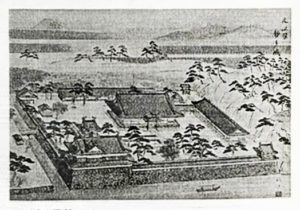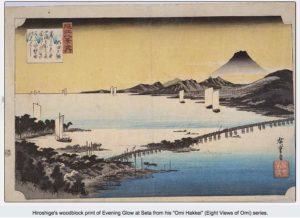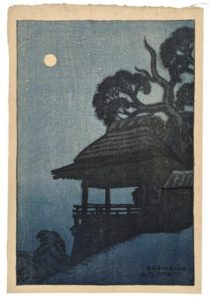With all the powerful new tools at our disposal, the world today has become fascinated with searching for our ancestors. Though technology opens once-closed doors, many of us turn to old family documents to give context and color to our quest to bring our family’s history to life. I have been blessed, as one of my most treasured family heirlooms is the book pictured here, handed down from my grandfather, to my father, to me. It is a handwritten chronicle of the history of the Yamaoka family, dating back to the early 1500s in Japan just before the feudal Momoyama period, when some of the most significant battles in Japanese history took place in which my family played a major role.
This book was sourced from ancient records of my family contained in close to a dozen historical collections, and was compiled many years ago by Toyokichi Yamaoka, a distant relative of mine. Completed when he was only 21, the volume is written in beautiful archaic Japanese calligraphy on semi-translucent rice paper, and it chronicles many generations of the Yamaoka family, listing all the marriages, births and deaths, the names of the wives and where they came from, and what the family relationships were. The book ends at the time of my paternal great-grandfather, and the dates are designated by eras, which were named after the emperors. Though I was born and educated in Japan, even I cannot read most of this volume, as it is in such archaic Japanese.

The chronicle begins with Kagetaka Yamaoka, born in 1526—a samurai lord of the Sengoku period, who owned Seta Castle, which is located near modern day Kyoto, beside Lake Biwa, the biggest lake in Japan. Kagetaka Yamaoka held the rank of military governor, and was connected to the family of the emperor. He was the first owner of the castle, which stood athwart a bridge that he built guarding the entrance to Kyoto where the emperor lived, and he fought a number of bloody wars to protect the city.

Every student of Japanese history is familiar with the names Oda Nobunaga, Akechi Mitsuhide, and Toyotomi Hideyoshi—as recognizable as the name George Washington is to American schoolchildren. Kagetaka Yamaoka led the forces that prevented the upstart Mistsuhide from entering the capital of Kyoto, by setting fire to the famous bridge that was protected by Seta Castle. This incident marks the beginning of the Yamaoka clan saga told in this book—Shofu Roku—loosely translated as Chronicle of the Winds of Family Wisdom, which suggests a philosophy of living based on the dynamic relationship between tradition and progress. This is as close as I can come to the meaning of the title—even the word ‘Shofu’ used this way is no longer found in modern Japanese dictionaries. I visited my family’s castle site in Seta in 2005, and although the castle itself is now just a ruin, the famous bridge, now known as Seta no Karahashi still exists, rebuilt in modern materials as a replacement for the wooden structure both erected and destroyed by my ancestor.

Included here are accounts of all the wars, all the soldiers, and all the exploits of the Yamaoka samurai—all the generations from feudal times to the recent past. I’m very, very proud of my family’s history and I have just presented this book to my daughter who will pass this on to her son, although my children and grandchildren are all Americans now, of course. I am the last one to carry the Yamaoka name here in America. The hereditary aristocratic ranking of my direct line does not exist any more in Japan, nor does the samurai order, which was effectively abolished in my home country in 1876. But my samurai blood runs through my children to my three grandsons, who I believe embody today all the noble traits our family was taught to honor and observe so long ago, as written down for the ages in Shofu Roku, the Yamaoka family history.


Thanks for your blog, nice to read. Do not stop.